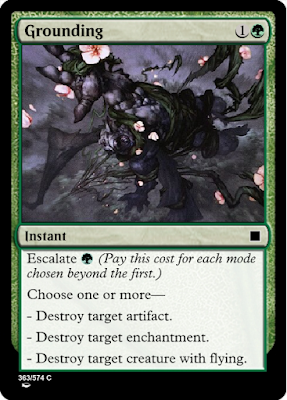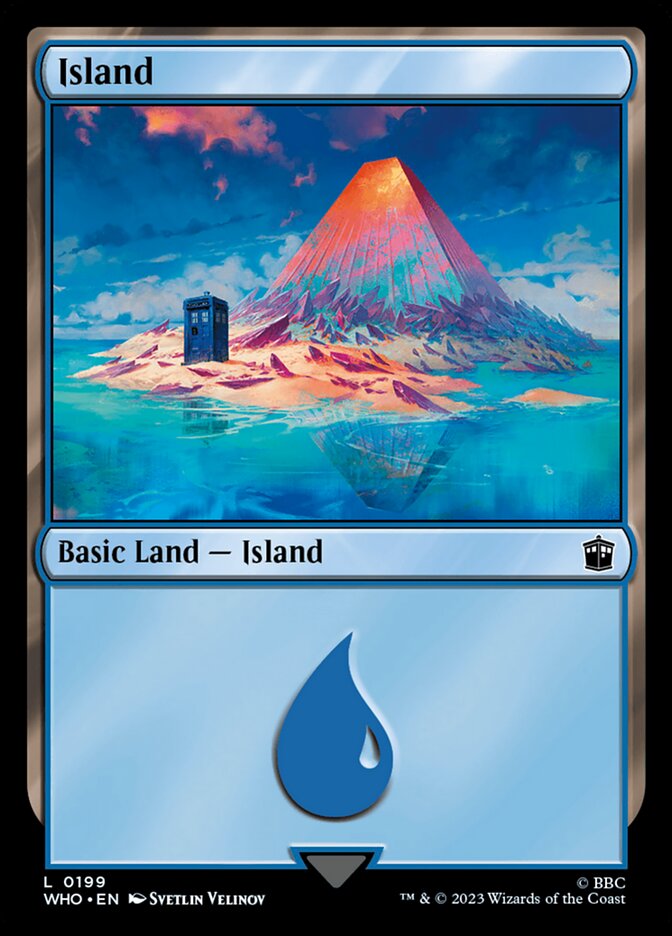So far we have looked at some general things. In this article I want to focus on a much more specific thing, and that is removal in green. Specifically removal of creatures. Green classically does not do this. Certainly not well. This is good in terms of flavour and colour identity but it is restrictive. More so in cube I have found than anywhere else. In cube the dorks are punishing, you can be locked out by an active Grim Lavamancer, or beaten to death by a quick to flip Delver of Secrets. You also just lose to cards like The Scarab God unless you have an overwhelming advantage before it is played. Cube is also a limited format where you are mostly playing a midrange dork against dork affair. Lack of removal in these situations puts you at quite the disadvantage, you are always essentially just going all in. Certainly green has things that compensate for this, mainly that of mana ramp. Typically it gets around a weakness in removal by playing one or two steps ahead of the curve and crushing opponents beneath raw power. This works to some degree but it is unreliable, and doesn't always give the most enjoyable of games. I like a bit more interaction from both sides of the table. Green can often feel a bit uninvolved and helpless. Either your stuff is better and you roll them or they have things you can't deal with and that is that.
With all that in mind I wanted to give green good access to removal. This is easier said than done however if you are trying to stay true to the colour pie and provide a good representation of the game. Green has some tools already in the fight against creatures. It has fight effects which are getting better but are still not really there as far as common cube play goes. The effect is intrinsicly risky and conditional making it fairly bad compared to other removal, even when somewhat pushed. Green also has the capacity to kill fliers directly but this is all too situational to be something we can rely on. Every little helps but we have to house our flying removal on modal cards else they will be unplayable in a setting like cube.
(An example of the kind of power you need in a Disenchant for it to get a look in at a cube format. Even with the modality this is still a pretty narrow card and needed a good push to look viable)
Even a smattering of well placed anti flier cards is not solving the problem, it is just a part of the way there. Fight effects will help get us rather further and makes up the bulk of my removal suit in green. The majority I have stuck on creatures so that part of the unreliability issues of fight effects is eased.
Other fight effects I have slapped onto cards that can wait and not need mana investment at the time of use. This is another way to help avoid the issue of needing a dork in play. The Seal I highlighted in Part 2 is a good example of this. It is also usable at instant speed making it far more dynamic and safe. The card below goes in the other direction and goes for a modal approach towards gaining playability.
Next up is an old mechanic that is a long way from perfect but that has both precedent and good flavour as far as being on green cards goes. I am talking about provoke. A mechanic only really done once and only found on 9 cards. It is basically fight but it is more restricted in that it utterly fails to do anything against dorks that can tap in some way and that can only work during your own combat step. It does have the upside of being reusable, and being sufficiently weak compared to fight, would allow me to put it on dorks for relatively low cost. It has other perks being able to tie up otherwise would be blockers but still mostly just a limp fight! The design space for provoke is also completely open what with it having so few cards and being found in a set with shockingly low powered dorks. I like how clean it looks on cards thanks to the key wording. There is also the classic "provoke of blocking" which is just flash. While one of the more common ways green has answered dorks throughout magic history it is only a defensive tool and it is not all that reliable. I do have a couple of ways green can sneak out an instant speed unexpected blocker but I don't really consider that to be out of the ordinary or noteworthy. It is probably closer to a pump spell in that it lets you "misrepresent" how you are able to block and bait a bad attack.
Of course one of the most common places for green to source their removal effects is from the colourless section of cards. Blast Zone, Walking Ballista, Karn, Oblivion Stone and cards of this nature have been helping green handle things all over the shop. My homemade cube will be no different with colourless cards able to set in and help out in a variety of ways.
Lastly there is some precedent for direct damage in green with the insect sting flavour. All these various green cards have been low powered and by all I think there are like three total! Even so, I felt like I was well within the colour pie creating this little green Shock. The slow pace of use, the being tied to a creature, and the general summoning sickness issues all make me perfectly happy with the flavour here. I feel entitled to take such a large leap in power because I am designing at cube power levels and with generally currently degrees of power creep to contend with as well. Dorks and removal have had that more than anything else and so this card seems entirely fine. I could probably let it hit any target and still have it be more than fair for task at hand.
I have given green a fairly well rounded pile of options when it comes to handling dorks. There may not be raw power when compared to the other colours but there is breadth and depth in the options and the power gap is as low as it has ever been. It is a substantial change compared to any cube I have ever played with. I cannot imagine this is going to push green over the edge but I do hope it lets green play more interactive games of magic.
































